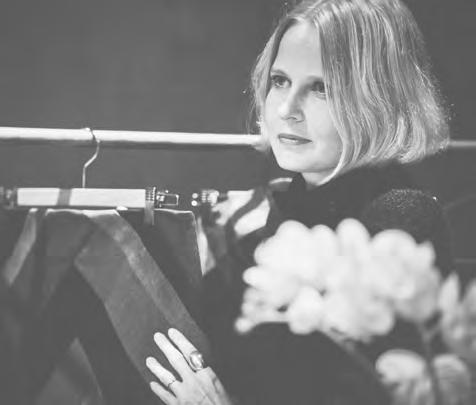
5 minute read
AN INTERVIEW WITH TYTTI THUSBERG
A Finnish Designer Fighting For Fair And Sustainable Fashion

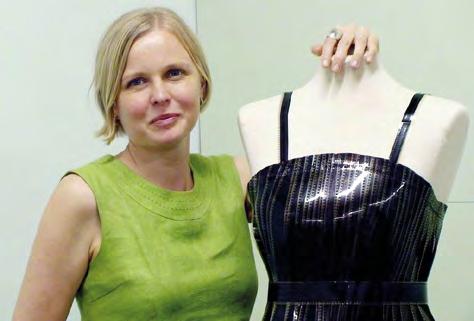
“We should provide fair working conditions for the dressmakers, for the manufacturers and of course we should be respectful with the environment”
Tytti Thusberg is a sustainable fashion creator and designer from Finland. In San Sebastian, where she has lived since 1996, Tytti has her studio and showroom. Thanks to her interest in sustainability, she has taken part in a number of projects in connection with eco-design and she leads projects in the area of textile recycling. Throughout her career, Tytti has designed and manufactured costumes for various theatre plays, as well as develop projects in connection with slow fashion and upcycling for private companies. Her designs, based on recycled materials, have been presented in a number of exhibitions, catwalks and international tradeshows. Owner of her own clothing brand, Tytti also has a brand called Slowbag to sell her range of handbags made with recycled seatbelts. She is also a consultant for emerging talent in fashion design in Tabakalera, the International Centre for Contemporary Culture, based in San Sebastian.
Interview by Erin Boyle Beltran de Guevara
How did you start in the world of sustainable fashion?
When I was young, I used to recycle all the old pieces of material I could find in my house. Of course, in those days recycling or sustainability were terms nobody used. For me it was just a way of experimenting. As I grew up my interest in fashion and sustainability developed.
In the 90s, something that could be called Eco fashion started. I somehow felt I could identify myself with that movement, since it was in-line with the way I saw life and the way I wanted to do fashion. I have always felt that there is an ethical way of doing fashion, a way that takes into account raw materials and not the exploitation of natural or human resources.
Which materials do you prefer to work with?
Well, there are lots of them, some I use a lot are teabags, yogurt lids, nets used to pack fruit and vegetables, coloured electricity cables, video tapes, certain type of tights, surgical masks, remains from the industry, celluloid and so on.
I always make clothes for women, I feel more comfortable doing this and I feel I can be more creative and make more attractive and flamboyant garments. I have experimented with men’s fashion, but
I find that the materials I use in my creations are more difficult to adapt to men’s clothing.
When was your first catwalk?
I remember it well! I was a student in the University of Applied Sciences in Kuopio, Finland, when I did my first catwalk. I took part in a number of catwalks in those days but the most important one was when I won the Smirnoff International Award in Finland. As a result of this, I was given the chance to go to South Africa with my design. It was a great experience and I did quite well in the catwalk in South Africa too!
What garment did you make to take part in the Smirnoff International Award?
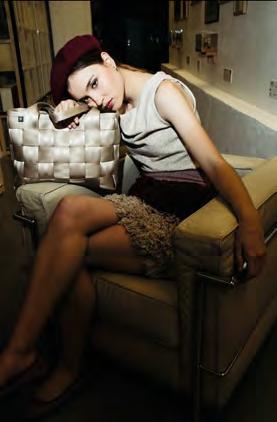
I made a jacket to enter the competition. My creation was made with felt that I produced with wool from Finland. My jacket was made embroiling the carded wool and then I made the felt. The raw material I used was local, I dyed the thread with natural plants I collected in the forest near where I was. It meant a lot to me because it was a new way to make felt.
That was also my final year project and I was given the highest mark. I have been creating sustainable fashion ever since!
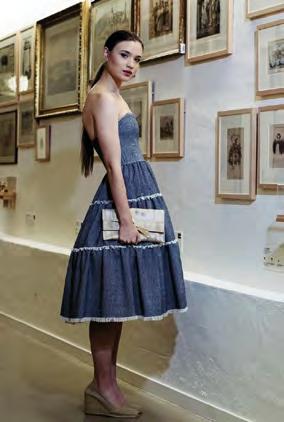
Where do you get the materials you work with in Spain?
For upcycling, I often get my textiles from second-hand warehouses, I go there very often. But for making my bags I need seatbelts. I started by going to scrapyards to get them. Then I found a seatbelt factory in Barcelona but unfortunately that factory closed and now I get them in a different place.
Tytti, in your opinion, what steps should be taken in fashion, one of the most contaminating industries on the planet, to make fashion more sustainable?
I think we should reduce production, and we should also improve the quality of what it is produced, we should provide fair working conditions for the dressmakers, for the manufacturers and, of course, we should be respectful of the environment. It is much more expensive to buy many cheap clothes than to opt for a timeless design of good quality. This is why I am an advocate of slow consumption, slow fashion.
Why did you decide to stay in Spain?
Well, it was quite peculiar. It was when I was at Uni that I invented the felt system I told you about. I concentrated very much in the symbolism of circular figures; it was fascinating for me. In Kuopio I met a guy from the Basque Country who told me that that type of symbiology was very important in the Basque Culture, so I was curious to learn more about that culture.
When I won the Award in Finland they gave me a scholarship of artistic creation and I decided to leave Finland and look for other places where I could investigate about circular figures and find wool to make felt. I remembered my Basque friend, got in touch with him, rented a studio in San Sebastian and I am still here. I have to say that my Basque friend is now my husband. This is why I am still in San Sebastian.
What is the Tytti Thusberg style?
For me it is the material that dictates the design normally. Materials are so important to me that I tend to focus on textures. I feel inspired by austerity, simplicity and harmony. Finn or Japanese designs inspire me with their pure, clean lines. I also feel that when one part of the garment stands out, the perfect harmony must be found.
On the other hand, I am interested in artisan methods and I apply them to my creations.
How do you see the recycle based fashion in the future?
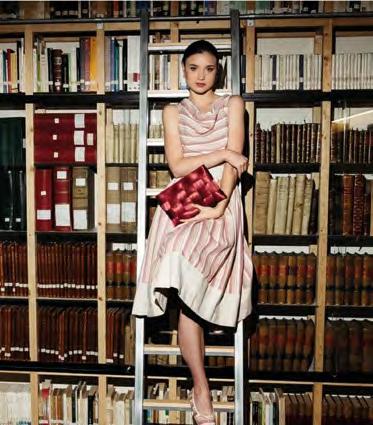
Nowadays there are many different proposals, and very professional ones by the way. There is a lot of high-level research and innovation, transformation of materials using industrial methods, circular economy methods and so on.
In my opinion, in the future big brands will have to make a bigger effort to create a more sustainable production at all levels, not only greenwashing. Consumers are more savvy and they know what they want. Sustainability is something more and more consumers demand and big brands will have to adapt.
Small brands like mine have been working this way for a long time and I feel the future lies here.
What are you working on now?
I am creating some artistic sculptures for an exhibition in San Sebastian.
I am also constantly working in the production of Slowbag bags, and in parallel, I have two projects to create costumes for two theatre shows. I am the designer and also producer in one of them and I am the costume production director in the other. This last one is a very intense and important project with lots of collaborators.
And I am very excited about an international project for next spring. It looks really interesting but it is too early to make it public.
Do you think you will go back to Finland?
Life brought me to San Sebastian and these days my life and my family are here. I think it will be very difficult for me to go back to Finland.
Many thanks to Tytti for contributing to our magazine






